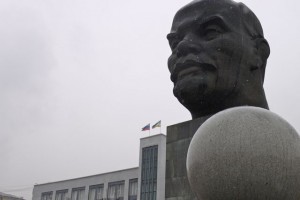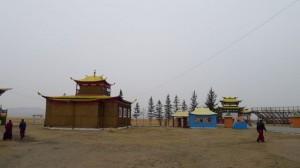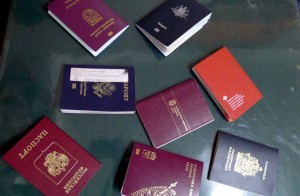NOT.
Ulan-Bator’s very own special feature is prevent travellers from leaving the city. People get stuck here for one reason or another. And the kicker is that there is nothing much to do here and in fact it can be very boring at times. Take for example, this Canadian girl who stayed in Khangor hostel for more than a month, because of the lost passport. Or another girl in UB Guesthouse broke her leg – two weeks stay. Another guy spent too much time drinking vodka with locals and as a result got sick. Extended stay too. And so on. My case is more trivial. First I could not leave the city to Terelj National Park, as there were no scheduled buses and then getting a train ticket to the Chinese border proved to be problematic. The next day tickets get sold out for some reason (my guess is that they are cheaper than buying several days in advance), but they put on sale a number of tickets on the day of departure. The cashier’s recommendation is always the same: if you want a ticket for the next day, come tomorrow at 8AM. And so I did only to see the line of more than a hundred people freezing in the morning chill. To make things more exciting a couple of police officers tried to control this wild sensation with the aid of tasers. Bloody nightmare. And this situation apparently repeats itself every morning – business as usual in Mongolia.
On the other hand, being stranded in the city without anything to do shifted the focus from doing things to socializing. I met a woman from Alice Springs, Australia, who stayed in the same hostel as myself. A former transcendental meditation teacher, on her spiritual journey to visit Hindu/Buddhist temples in Asia. Bah, an instant soul-mate. Another interesting encounter is a random local on the street, who offered help finding a bus to Terelj National Park (the bus was never found by the way). A former stroibat and a political dissident, he shared an alternative take on the recent history of Mongolia. According to him the famous democracy movement in Mongolia is a fluke and was initiated by the local KGB in order to stay in power. The process of privatization was not so different to Russia’s one, i.e. the lion share of resources ending up in the hands of few oligarchs. Moscow is still pretty much in charge, although their control is not as obvious as in Soviet years. Apparently a lot of people are dissatisfied with the corrupt to the core government and after-election riots in 2008 only reaffirm this. Interesting indeed – Lonely Planet gives a completely different picture on the state of the affairs in the country.
Anyhow, I am a happy owner of the train ticket to Zamyn Uud and will leave to China today. Mongolia is very beautiful and would love to visit it again, but Ulan Bator is unfortunately not. If I am here ever again, I will be sure to work out the exit strategy right away upon coming into the city.
High hopes for China!


